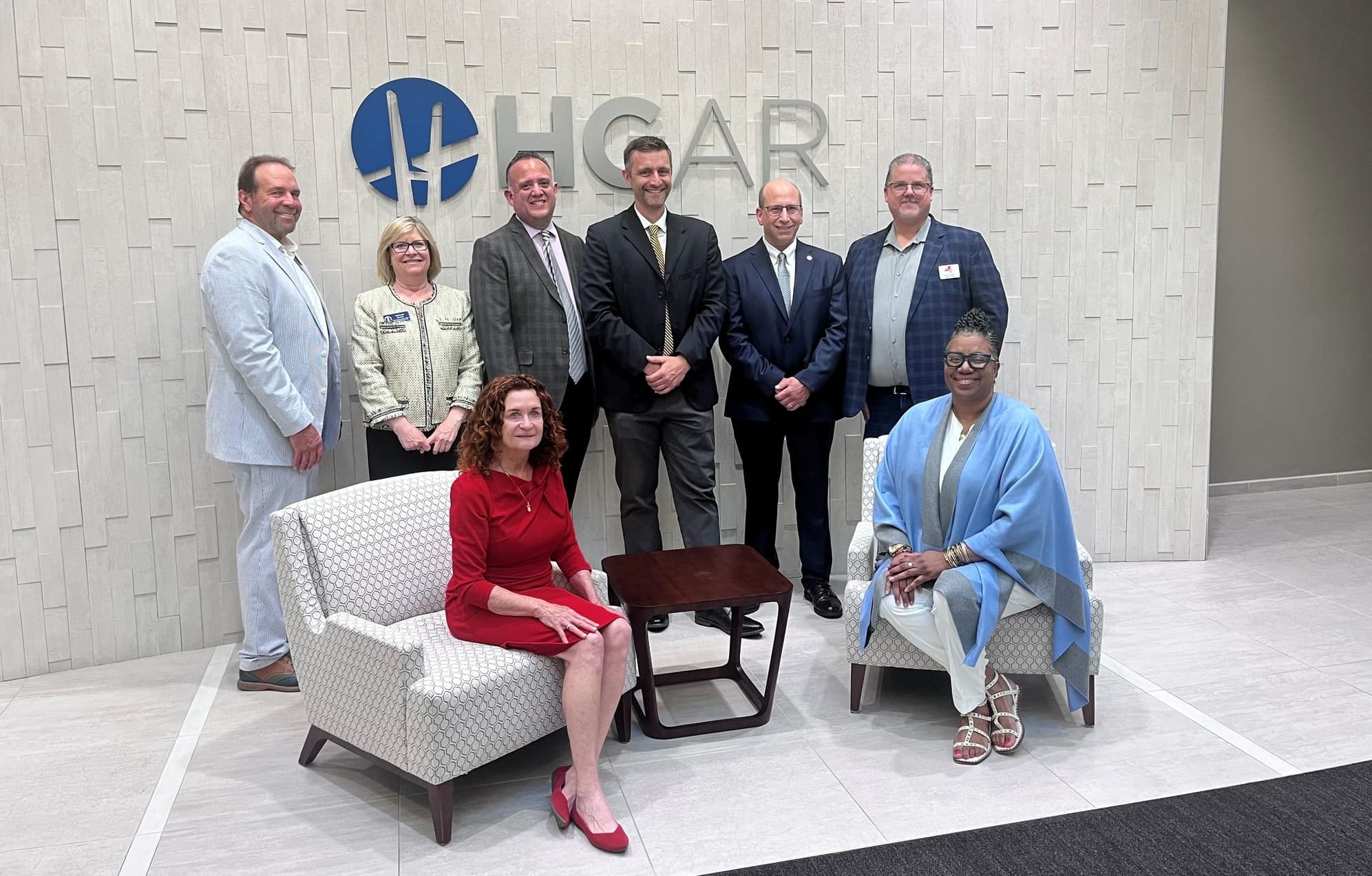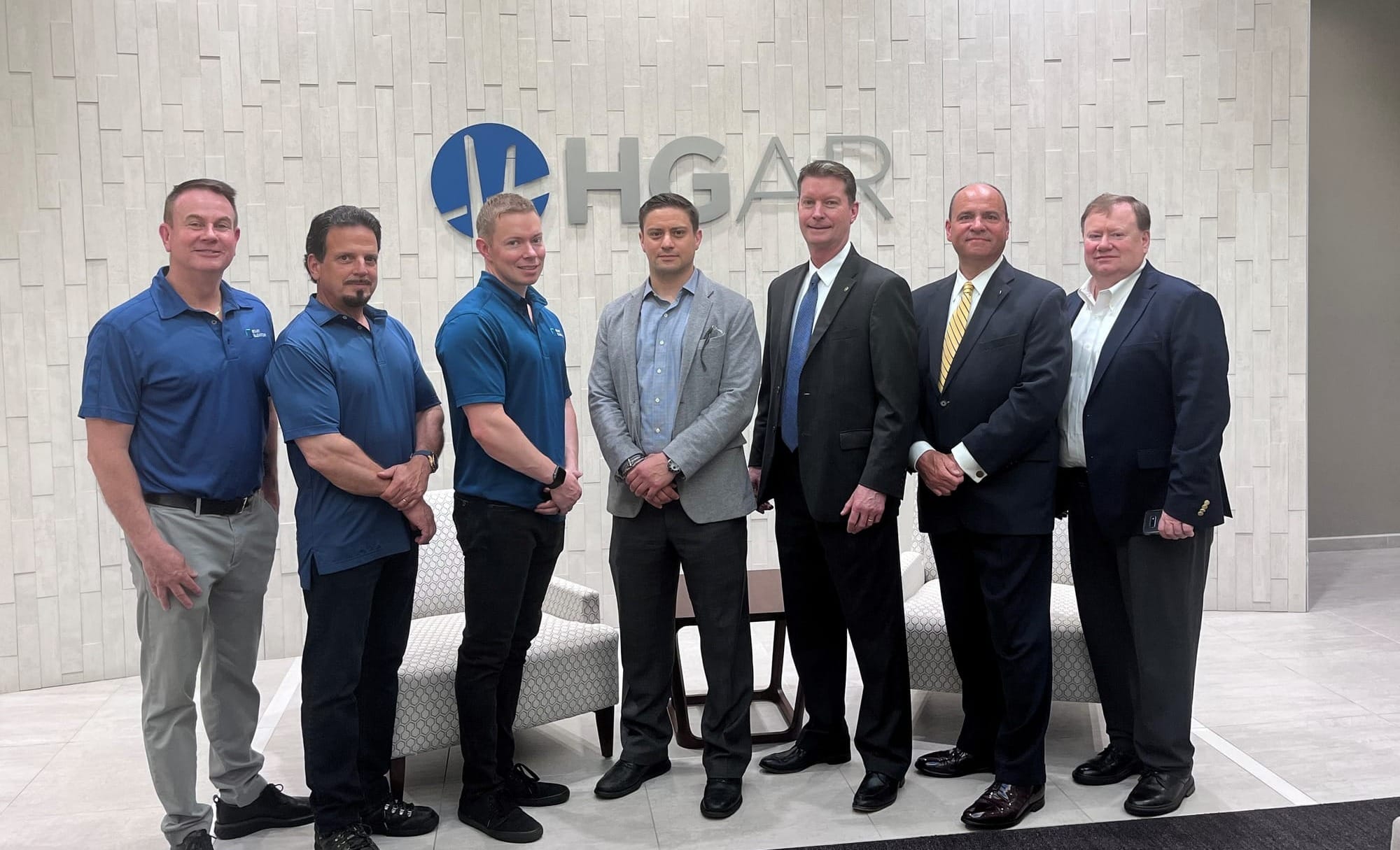FROM THE DESK OF THE CEO: A Legacy of Transformation and Warmest Wishes
I leave HGAR knowing that we are now more member-centric and innovative than ever before.
Research by Pattern for Progress indicates that taxes alone in Connecticut and Pennsylvania are 20% to 40% lower than in New York, and 50% to 80% lower in the Carolinas and Florida.

WHITE PLAINS—The need for more affordable housing was at the crux of discussions at a recent Hudson Valley Economic Development Powerhouse Roundtable, presented by HGAR’s Commercial & Investment Division. Panelists called for local governments to consider more creative zoning options that could increase workforce housing while reducing job-related stress for both employers and employees.
Moderated by Adam Bosch, CEO, Hudson Valley Pattern for Progress, the roundtable held on May 23 at the HGAR offices in White Plains included: Kathleen Ables, President, Putnam County Economic Development Corp.; Steve Gross, Director, Orange County Economic Development; Deborah Novick, Director, Entrepreneurship & Innovation, Westchester County; and Rafael A. Roger, Vice President, Bronx Economic Development Corp.
Bosch noted that lower birth rates, smaller families and outward migration from New York is adding to the workforce stress, as many firms struggle to find adequate and qualified help. “We don’t have enough humans to fill these jobs, and this is becoming a real challenge,” said Novick. “We need more affordability and availability of housing—the key things to change in order to bring in the workforce.” Roger echoed those sentiments, noting that the Bronx is in the same situation as the Hudson Valley when it comes to housing. “Affordability is a real issue,” he said. “People are leaving New York because of that.”

Research by Pattern for Progress indicates that taxes alone in Connecticut and Pennsylvania are 20% to 40% lower than in New York, and 50% to 80% lower in the Carolinas and Florida. “We know from the median home prices in our region that home ownership is out of reach for many,” added Bosch. With high rents also pricing people out of the area, the panelists believe that could create a domino effect. “The healthcare industry is feeling the stress of maintaining its workforce, and many nurses are on contract from somewhere else. We won’t have the goods and services we need without the people who provide the and we won’t have the people without places they can afford to live,” Bosch said.
Ables agreed that communities throughout our region need to rethink their zoning options when it comes to accessory apartments. “There’s nothing wrong with having apartments over retail stores or more mother/daughter apartments, where parents could help with childcare,” she said. “Some towns are welcoming to these types of housing, and as family size shrinks, maybe home sizes should as well.” Tiny home communities were mentioned as another alternative.
Gross contends that keeping their master plans up to date is essential for all cities, towns and villages. “Things like floating zones can help to make plans more adaptable,” he said, citing the case of an Orange County film studio, where the owners wanted to allow employees to live there while filming was taking place, but the area was not zoned for temporary residences.
Bosch stressed that with today’s high cost of home purchases and rentals, it’s so important for local zoning to match the needs of the local communities. Roger agreed. “Right now, in the Bronx, what we have on the books does not match what we need. Some of the zoning laws are so old that they talk about storage facilities for horse and buggies.”
Citing the progress made by some Westchester communities, Novick commended them for innovative zoning for housing. “If we don’t have young, vibrant families in our communities, we don’t have a workforce,” she said. Bosch also cautioned against potential community backlash at plans to provide more affordable housing.
“We know that 97 of our 127 school districts in the region are shrinking—some by more than 50%,” he explained. “That’s 45,000 fewer kids in school now than in 2003. The biggest myth in the Hudson Valley is that the schools won’t be able to handle more children coming in.”
Gross added that quality of life is also just as important when reimagining zoning to augment the workforce. “Employers want to be able to offer exciting things for their employees to do such as walking trails, restaurants, and recreational facilities,” he said.
Currently, the demand in Putnam County is trending towards redevelopment and adaptive reuse. Ables cited plans for Brewster Crossing, a five to six-story building with 408 rental apartments, a 500-space garage, brewery, retail and dining business, plus 20,000 square feet of municipal office space. Groundbreaking is set for 2025 on a 5.4-acre tract of land in the downtown area.
In Westchester, Novick touted transit-oriented developments in White Plains, New Rochelle and Port Chester, plus new housing in former office buildings. Roger agreed that housing growth along the Metro-North Railroad and subways is in demand in the Bronx. “The old post office on 149th Street is for sale and that could be gutted and renovated for many other uses,” he said.
“New York State is setting aside a lot of money for adaptive reuse, and many times that money goes underutilized,” Bosch said. “It’s important that communities, commercial brokers and developers know about these programs so that money doesn’t end up sitting on the shelf.
For Orange County, Gross said commercial developers are looking for proximity to markets, accessibility to major highways and strong infrastructure. The need for distribution centers is trending now.
As for the industry sectors where each county sees growth, Gross puts tourism and hospitality at the top of the list. “We have Legoland, City Winery, Angry Orchard and now there’s a feasibility study underway for a new conference center,” he noted. “I think Orange County is also well-positioned for a film and movie sector.” The 2022 Oscar award-winning film, “The Whale,” starring Brenden Fraser, was filmed in Newburgh.

For the Bronx, Roger cited life and health sciences as the growth area, given the proximity of major hospitals like Montefiore Medical Center and Jacobi Medical Center. “We also have Hunts Point—the largest food market in the country, and there are plans for opening a new facility,” he said.
Novick also sees life sciences as the point of steady growth for Westchester. “Regeneron is the largest private sector life science employer in the state, and they are looking at plans for a massive expansion to add about 1,000 jobs over the next six years,” she said. The New York Blood Center has purchased the former Avon campus in Rye and plans to add 400 jobs when it opens this fall.
Putnam County is also experiencing a shift toward medical development with updates to Putnam Hospital and several new walk-in clinics. “We also expect to see growth in warehousing and expansion of existing industrial facilities,” she said.
Receive original business news about real estate and the REALTORS® who serve the lower Hudson Valley, delivered straight to your inbox. No credit card required.